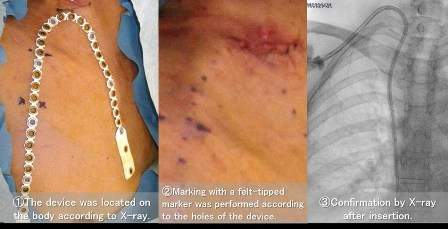
Successfully used on a group of 10 patients, the new insertion support device will help in accurate tunneled cuffed catheter (TCC) placement.
Patients with improperly functioning kidneys regularly require to undergo hemodialysis, a procedure of purifying blood in an artificial kidney outside the body.
Hemodialysis needs access to blood vessels for the collection of blood and its re-introduction after purification
During this process, vascular access is achieved with TCC and incorrect positioning of TCC will result in blood clots and induce central vein thrombosis.
The new insertion support device has been developed to accommodate individual body shape difference, and will also help in reducing the rate of TCC replacements.
Researchers have used an expanded polytetrafluoroethylene (ePTFE) material to produce the device. It is said to be a bendable ribbon with holes (eyelets) spaced 1cm apart.
The holes will enable to make marks on the patient’s body with a felt-tip pen.
The insertion support device has been tested on 10 Japanese adult hemodialysis patients, including six men and four women with a mean age of 71.3 years. They were treated at Shigei Medical Research Hospital.
With the support of X-ray imaging, the device has been placed on the body. The physicians can insert the TCC within an error of about 1cm, with the help of the markings made on the patient’s body.
Researchers monitored the device for two months, during which there was no catheter replacement required.
The device, developed by assistant professor Toshiaki Ohara from Okayama University and colleagues, allowed to decrease catheter waste and the overall cost of hemodialysis.
The attachment of a catheter needs exposure to X-rays to help reduce accumulated radiation doses for both patients and physicians.
Researchers believe that the new device can be used for catheter intervention in many fields, although it was studied with only 10 patients in a short observation period.



